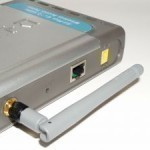The Network Layer is located at the 3rd position in the seven layer OSI model. It offers serviceable and practical ways of transmitting variable length data series from a source to a destination through one or more networks, while preserving the class of service and error handling tasks. The Network Layer is accountable for source to destination packet deliverance and routing through intermediate networks. On the other hand, the Data Link Layer is in charge of node-to-node frame deliverance on a similar channel. The Network Layer executes network routing tasks Read More
DSL Splitter
A DSL splitter, like a DSL filter, is a device used to prevent interference problems. It filters the low frequencies of the telephone line from the high-frequency ADSL line. However, the installation of a DSL splitter requires the help of a technician to split the main telephone cable into 2 lines unlike a DSL filter which is easier to install. A DSL splitter is installed into one of the lines running to every jack in the house. After installing the splitter, a new phone point used solely for the ADSL Read More
Cisco Router Commands
Cisco Router IOS Cisco routers are manageable devices, which means that they have the Cisco IOS software for network and internetwork management. The Cisco’s IOS software delivers network services and enabled networked applications. The Cisco IOS is the CLI based software with which Cisco IOS commands can be executed. Cisco Commands There are more than 2,000 Cisco router commands in the latest Cisco router IOS software version including the basic router commands along with the advanced level router commands such as Cisco wireless router commands. The Cisco router IOS has Read More
IP Address Classes
IP Address classes were the original organizational structure for IP addresses. The specific address class would determine the maximum potential size for a computer network. The address class would define which of the specific bits of the address would be used to identify the network and network identification, the bits to identify the host computer and host ID, and total number of host subnets permitted per network. Five total classes of IP addresses were defined, class A through E. Although the IP class term will commonly be used to describe Read More
Distance Vector Routing Protocol
Routing Protocols Whenever different networks connect with each other to communicate and to share the data and resources, it is called internetworking. For internetworking, routers must be used on each network or at backbone to route the packets. To route a packet, a router needs to know: Destination Addresses Sources it can learn from Possible routes Best route Maintain and Verify the routing information Routers must learn the destinations that are not directly connected. For this purpose, routing must enabled on the routers. Routing uses a route that a network Read More
How to Configure a Router

One of the main disadvantages of connecting to the Internet via wire is that it prevents you from moving around. On the other hand, by setting up and configuring a router, you can move around with your lap top and surf the web more comfortably. Configuring a router is not difficult; however, people may have problems figuring out how to set it up. Configuring a Router When setting up a router, you have to think about location. Put in a “central” place so that you can get a signal from Read More
Enabling IP Routing
WAN connects different LANs with each other to communicate and to share data and resources. As a result, routers must be used on each network or at backbone to route the IP packets and IP routing should be enabled on the routers. Routers must learn the destinations that are not directly connected by building and maintaining routing tables. Once the routing table is built, the router switches packets by matching an incoming packet’s destination address with the “longest match” in the routing table. The routing table can be constructed with Read More
TCP Sequence Prediction Attack
A TCP sequence prediction attack is an attempt to hijack an existing TCP session by injecting packets which pretend to come from one computer involved in the TCP session. The TCP Sequence Prediction Attack TCP is a reliable connection-oriented layer 4 (Transport Layer) protocol. Packet transfer between hosts is accomplished by the layers below layer 4 and TCP takes responsibility to making certain the packets are delivered to higher layers in the protocol stack in the correct order. To accomplish this reordering task, TCP uses the sequence number field. To Read More
802.1Q
802.1Q is also known as IEEE 802.1Q or VLAN tagging. It defines a virtual local area network. It is a protocol that allows virtual LANs to communicate with one another using a 3-layered router. It was developed as a part of IEEE 802. Why Was The 802.1Q Standard Developed? Large networks use up a lot of bandwidth and are slow. It is desirable to break up these huge LANs into smaller, more manageable networks. To address this problem, the 802.1Q standard was developed as a part of IEEE 802. This Read More
What is Fax over IP?

Sending Faxes over an IP Network There are many different instances where sending a fax is required. This is actually a costly service which will require the use of a fax machine which is capable of sending information over a phone line to its destination. An alternative to this is a much lower cost service which works in much the same way. It is Called Fax over IP or “FoIP” for short. It basically takes the fax message which could be from a piece of paper or directly from the computer being used to Read More


Share on: